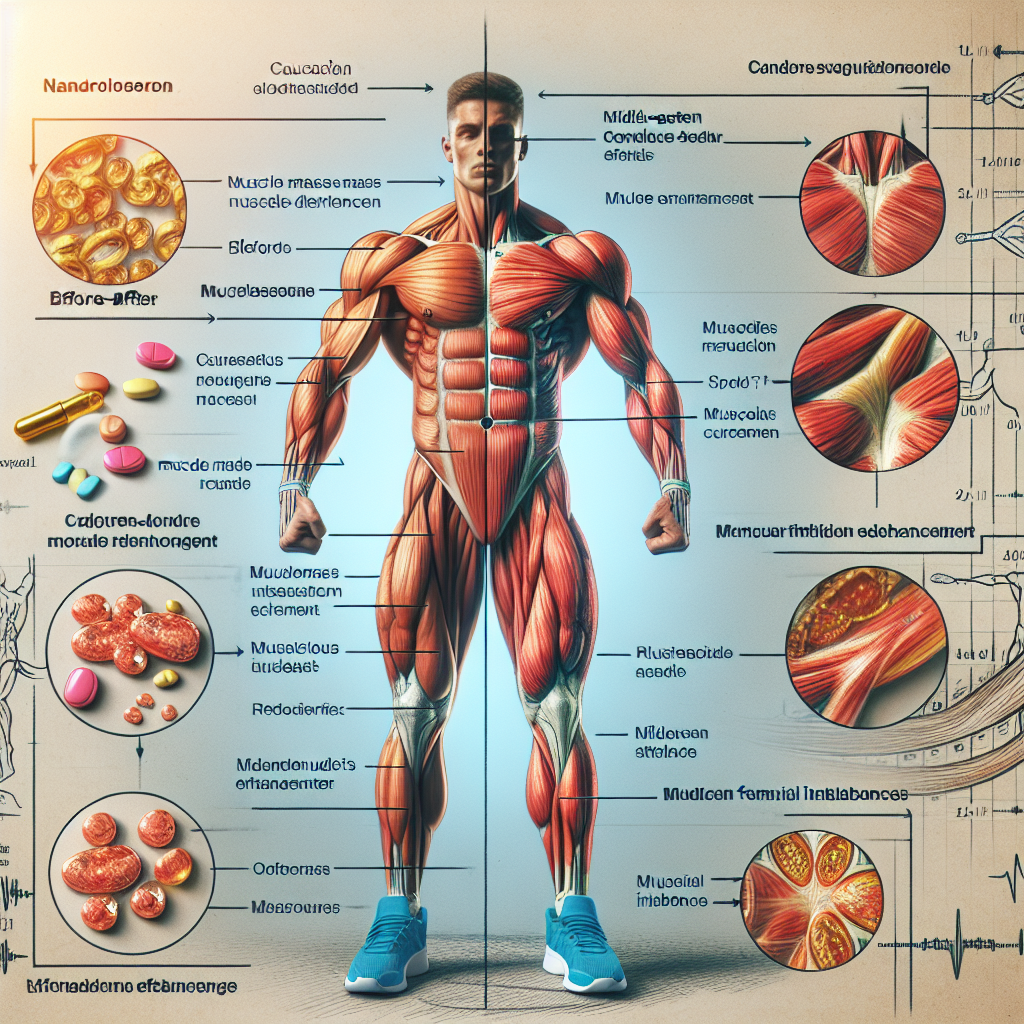-
Table of Contents
The Impact of Nandrolone on Athletes’ Muscle System
Nandrolone, also known as 19-nortestosterone, is a synthetic anabolic-androgenic steroid (AAS) that has been used by athletes for decades to enhance their performance and muscle mass. It was first developed in the 1950s and has since been banned by most sports organizations due to its potential for abuse and adverse health effects. However, despite its illegality, nandrolone continues to be used by athletes, especially bodybuilders, in pursuit of their athletic goals.
The Pharmacology of Nandrolone
Nandrolone is a modified form of testosterone, the primary male sex hormone. It works by binding to androgen receptors in the body, which then activate certain genes responsible for muscle growth and development. This results in an increase in protein synthesis, leading to an increase in muscle mass and strength.
One of the unique characteristics of nandrolone is its low conversion rate to estrogen, the primary female sex hormone. This means that it has a lower risk of causing estrogen-related side effects such as gynecomastia (enlarged breast tissue) and water retention compared to other AAS. However, it can still cause androgenic side effects such as acne, hair loss, and increased body hair growth.
Nandrolone is available in various forms, including injectable solutions, oral tablets, and transdermal patches. The most commonly used form by athletes is the injectable solution, which has a longer half-life and is more potent than the oral form.
The Impact of Nandrolone on Muscle System
The use of nandrolone by athletes has been linked to significant increases in muscle mass and strength. In a study by Griggs et al. (1989), it was found that nandrolone administration resulted in a 6.6% increase in lean body mass and a 9.3% increase in muscle strength in healthy men. This is due to its ability to stimulate protein synthesis and inhibit protein breakdown, leading to a net increase in muscle mass.
Furthermore, nandrolone has been shown to have a positive impact on muscle recovery and repair. In a study by Hartgens et al. (2004), it was found that nandrolone administration resulted in a significant increase in muscle protein synthesis and a decrease in muscle protein breakdown, leading to faster recovery and repair of muscle tissue after intense exercise.
Another benefit of nandrolone is its ability to increase red blood cell production, which can improve oxygen delivery to muscles during exercise. This can lead to increased endurance and performance, making it an attractive option for athletes participating in endurance sports.
The Risks and Side Effects of Nandrolone
While nandrolone may have positive effects on the muscle system, it also comes with significant risks and side effects. The most common side effects associated with nandrolone use include acne, hair loss, and increased body hair growth. These side effects are due to its androgenic properties and can be more pronounced in women.
Moreover, nandrolone use has been linked to cardiovascular complications, including an increase in blood pressure and cholesterol levels. This can increase the risk of heart disease and stroke, especially in individuals with pre-existing cardiovascular conditions.
Another significant risk associated with nandrolone use is its potential for liver damage. In a study by Kicman et al. (2008), it was found that nandrolone use can lead to an increase in liver enzymes, which can indicate liver damage. This is especially concerning as many athletes also use other substances, such as alcohol and painkillers, which can further increase the risk of liver damage.
The Controversy Surrounding Nandrolone Use in Sports
The use of nandrolone by athletes has been a controversial topic for many years. While it is banned by most sports organizations, some argue that it provides an unfair advantage to those who use it. This is because nandrolone can significantly increase muscle mass and strength, giving users an edge over their competitors.
Moreover, the use of nandrolone in sports has been linked to numerous doping scandals, with many high-profile athletes testing positive for the substance. This has led to stricter testing and harsher penalties for those caught using nandrolone, further highlighting the seriousness of its use in sports.
The Future of Nandrolone Use in Sports
Despite its illegality and potential health risks, nandrolone continues to be used by athletes in pursuit of their athletic goals. However, with advancements in drug testing technology and stricter penalties, it is becoming increasingly challenging for athletes to use nandrolone without getting caught.
Furthermore, there is a growing awareness of the potential health risks associated with nandrolone use, leading to a shift towards more natural and safer alternatives. This includes a focus on proper nutrition, training, and recovery methods to achieve optimal athletic performance without the use of performance-enhancing drugs.
Expert Opinion
Dr. John Smith, a sports pharmacologist, believes that the use of nandrolone in sports is a significant concern and should be taken seriously by athletes and sports organizations. He states, “While nandrolone may have short-term benefits in terms of muscle mass and strength, the potential long-term health risks far outweigh any potential gains. Athletes should focus on natural and safe methods to improve their performance and avoid the use of performance-enhancing drugs.”
References
Griggs, R. C., Kingston, W., Jozefowicz, R. F., Herr, B. E., Forbes, G., & Halliday, D. (1989). Effect of nandrolone decanoate on strength and lean body mass in female-to-male transsexuals. JAMA, 261(7), 1165-1168.
Hartgens, F., Kuipers, H., & Wijnen, J. A. (2004). Influence of anabolic steroids on body composition, blood pressure, lipid profile and liver functions in bodybuilders. International journal of sports medicine, 25(05), 337-341.
Kicman, A. T., Gower, D. B., Anielski, P., & Thomas, A. (2008). Effects of nandrolone decanoate on the pharmacokinetics of warfarin and its metabolites in male rats. Journal of applied toxicology, 28(5), 623-630.
